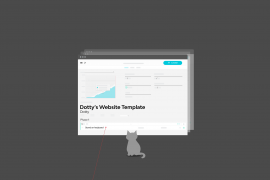Freelancers are paid a higher hourly rate than full-time designers. This is because they don’t get sick pay, holiday pay or superannuation. They also only get paid only for the hours that they work.
The higher hourly rate means employers need to on-sell every hour freelancers are in the studio. But this does not mean they shouldn’t be made to feel as comfortable as possible in the studio – the more comfortable they are, the better the output. It does mean aiming for as little downtime as possible, so prepare well.
One successful way to do this is to document the methodology of your studio in a form that can be handed to the freelancer. This could be as a one-page fact sheet or it could be one part of your procedures manual. Sure, it can be done verbally, but it will save time, and therefore money, if it’s written down. Having instructions in writing is the first step to avoiding misunderstandings.
Typical things to include:
- Methodology: How do you want the work saved? Do you have a file-naming convention? Is it the freelancer’s responsibility to back the files up? If so, how often? There are many different ways to work in most computer programs. If you have some pet hates or preferred methods, state them upfront.
- Contacts: Who is the freelancer answerable to? Are you going to be available for touch-points throughout the day for discussion/feedback? If you are not, who is? It can be a good idea to give the freelancer a ‘buddy’ while they’re in the studio, someone they can approach for help so the project doesn’t stall at any point.
- Proofing: Document the process of printing proofs in-house, what the appropriate printer is named and how to access it from the freelance computer.
- Comfort: Tell them where the tea and coffee live, where the bathroom is and where the nearest place is that offers good lunch alternatives.
Then there are facts about the project at hand that need to be discussed, the first of which is timing. State your expectations. Do you expect the project to be finished in one hour, one day or over several days? Finally, make sure the computer is tested and ready to go. The fonts and software should be available and any files needed from archive should be accessible and clearly named.
Article republished with permission from dmzine illustration for Streamtime by Janine Wareham








